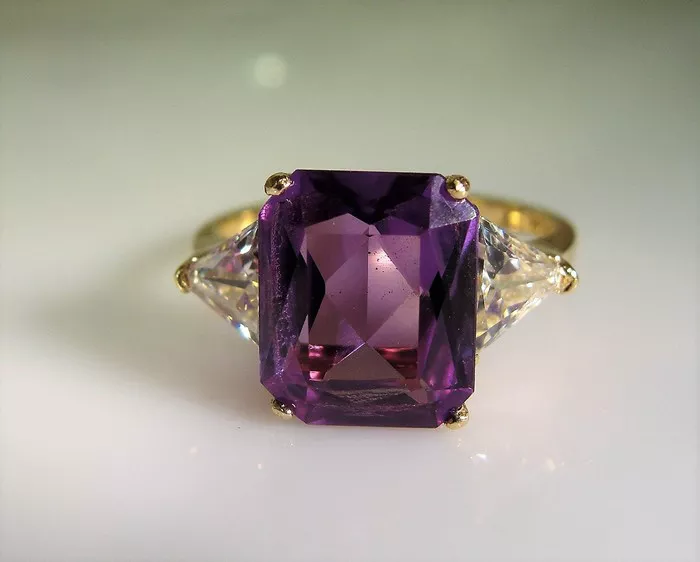Diamond rings are not just symbols of love and commitment; they also represent significant financial investments. The cost of a diamond ring can vary widely based on several factors, including the characteristics of the diamond itself, the quality of craftsmanship, market trends, and the reputation of the jeweler. This comprehensive article delves into the intricacies of diamond pricing, explores the factors that influence costs, provides insights into purchasing considerations, and offers practical tips for navigating the diamond market.
Understanding Diamond Pricing
Diamond pricing is a complex subject influenced by multiple factors that contribute to its overall value. Key considerations include:
1. The 4Cs of Diamonds
The 4Cs—cut, color, clarity, and carat weight—are universally recognized as the primary determinants of a diamond’s quality and therefore its price:
Cut: Often considered the most critical factor, the cut determines a diamond’s brilliance and overall visual appeal. A well-cut diamond reflects light effectively, enhancing its sparkle and value.
Color: Diamonds are graded on a color scale from D (colorless) to Z (light yellow or brown). Colorless diamonds (D-F) are rarer and command higher prices.
Clarity: Refers to the presence of internal or external flaws, known as inclusions and blemishes, respectively. Diamonds with fewer and less visible inclusions are more valuable.
Carat Weight: Diamonds are weighed in carats, with larger diamonds generally costing more per carat due to their rarity.
2. Shape and Certification
Diamond Shape: Different diamond shapes (round, princess, oval, etc.) can impact pricing. Round diamonds tend to be more expensive due to their popularity and the higher demand for well-cut round stones.
Certification: Diamonds graded by reputable gemological laboratories (e.g., GIA, AGS) provide assurance of quality and authenticity, influencing pricing.
Factors Influencing Diamond Ring Costs
Beyond the 4Cs, several additional factors contribute to the cost of a diamond ring:
1. Market Trends and Demand
Supply and Demand: Fluctuations in diamond supply, influenced by mining production and market demand, can impact prices.
Trends: Popular styles and preferences, influenced by celebrities, fashion trends, and cultural shifts, can affect the value of certain diamond cuts and settings.
2. Setting and Metal
Setting Style: The design and complexity of the ring setting, whether simple solitaire or intricate halo, affect overall pricing.
Metal Type: The choice of metal (e.g., platinum, gold) for the ring band influences its durability and aesthetic appeal, contributing to the overall cost.
3. Brand and Jeweler Reputation
Brand Reputation: Established jewelry brands with a history of quality craftsmanship and ethical sourcing may command higher prices.
Jeweler Expertise: Customization, craftsmanship, and additional services (e.g., resizing, maintenance) offered by the jeweler can influence pricing.
Purchasing Considerations
When purchasing a diamond ring, several considerations can help ensure you get the best value for your investment:
1. Define Your Budget
Financial Planning: Set a realistic budget based on your financial situation and priorities. Consider factors such as savings, financing options, and long-term financial goals.
2. Educate Yourself
Learn About Diamonds: Familiarize yourself with the 4Cs and other factors influencing diamond quality and pricing. Understanding these basics empowers you to make informed decisions.
3. Choose a Reputable Jeweler
Research: Select a reputable jeweler with a track record of quality, customer service, and ethical practices. Look for certifications from recognized gemological laboratories.
4. Consider Customization Options
Custom Designs: Explore customization options to create a unique ring that reflects your personal style and preferences. Custom designs may involve additional costs but offer tailored craftsmanship.
5. Evaluate Long-Term Value
Resale Value: While diamond rings are often purchased for sentimental reasons, considering factors that affect resale value (e.g., diamond quality, certification, and market trends) can be prudent.
See Also: What Is the Largest Diamond Ring in the World?
Tips for Navigating the Diamond Market
Navigating the diamond market requires attention to detail and a discerning approach:
1. Compare Prices
Comparison Shopping: Compare prices from multiple jewelers to ensure competitive pricing and value. Be wary of unusually low prices, as they may indicate compromised quality.
2. Ask Questions
Inquire About Origins: Seek transparency regarding the diamond’s origin, ethical sourcing practices, and any relevant certifications or guarantees.
3. Understand Return Policies and Warranties
Purchase Safeguards: Familiarize yourself with the jeweler’s return policies, warranties, and after-sales services. Clear terms can provide peace of mind regarding your purchase.
4. Seek Expert Advice
Consult Professionals: If uncertain, seek guidance from gemologists, jewelry appraisers, or trusted advisors who can offer independent assessments and advice.
Conclusion
The cost of a diamond ring encompasses more than monetary value; it embodies love, commitment, and personal expression. Understanding the factors influencing diamond pricing—from the 4Cs to market trends and jeweler reputation—empowers consumers to make informed decisions aligned with their preferences and budget.
As you embark on the journey of purchasing a diamond ring, whether for an engagement, anniversary, or special occasion, may this guide serve as a valuable resource. May your chosen diamond ring symbolize not only enduring beauty but also the cherished moments and memories it represents.

